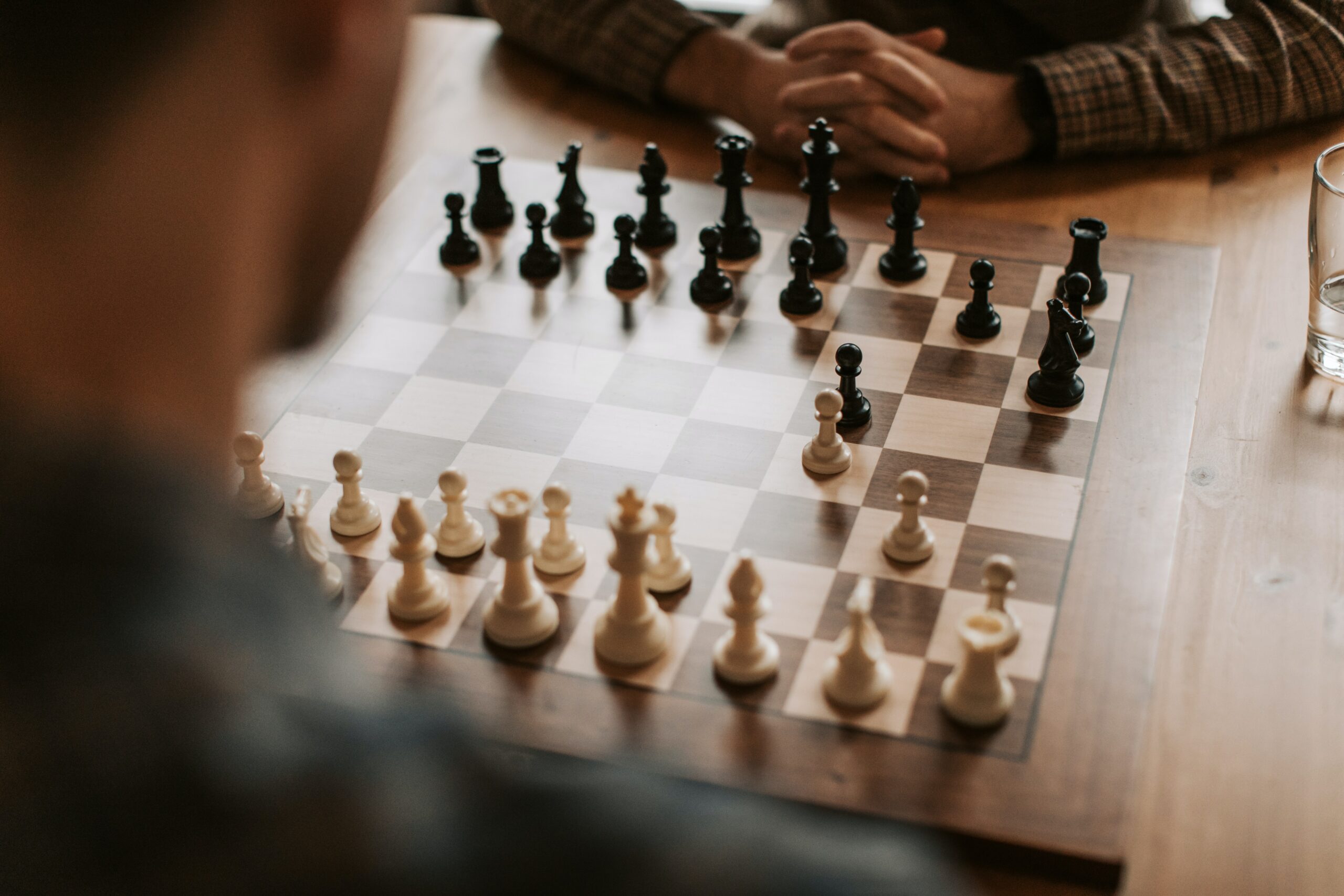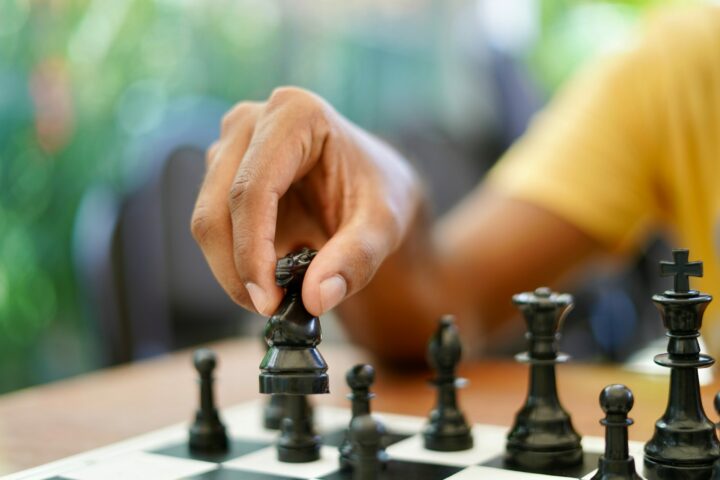Chess is a game of strategy and intellect, where players must navigate complex positions and make critical decisions to outmaneuver their opponents. To excel in this mind sport, one must not only possess tactical acumen but also a deep understanding of chess strategy.
Developing solid strategic skills can elevate one’s game to new heights, allowing one to anticipate their adversary’s moves and create winning plans. In this comprehensive guide, we will explore the best ways to study chess strategy and equip you with the tools needed to become a formidable strategist on the chessboard.
How can I develop a strong foundation in chess strategy?
Building a strong foundation in chess strategy is essential for any aspiring chess player. It starts with understanding the basic principles that govern the game. By familiarizing yourself with fundamental concepts such as piece development, control of the center, and pawn structures, you lay the groundwork for your strategic growth.
Additionally, studying classic games played by renowned chess strategists can provide valuable insights into their decision-making process. It is also crucial to practice solving tactical puzzles, as they help improve your calculation abilities and tactical awareness, which are closely linked to strategic thinking.
As you delve deeper into the world of chess strategy, remember to analyze your games to identify areas for improvement and learn from your mistakes. By constantly honing your strategic skills and expanding your chess knowledge, you can develop a solid foundation that will serve as a springboard for future growth and success.
What are the key principles of piece coordination in chess?
Piece coordination is a crucial aspect of chess strategy. It involves harmonizing your pieces to work together effectively and maximize their potential. The key principles of piece coordination include centralization, cooperation, and harmonious placement.
Centralization aims to place your pieces in the center of the board, where they exert greater influence and have more options for future moves. Cooperation involves coordinating your pieces to support each other’s activities, whether it’s through attacking or defending specific squares or pieces.
Harmonious placement refers to positioning your pieces in a way that avoids overcrowding and allows for optimal mobility and flexibility. By adhering to these principles and constantly seeking ways to improve piece coordination, you can enhance your strategic understanding and unleash the full power of your army on the chessboard.
How can I improve my understanding of pawn structures?

Pawn structures play a significant role in chess strategy as they determine the nature of the position and the plans that can be pursued. To improve your understanding of pawn structures, it is important to study and analyze games featuring different types of structures, such as isolated pawns, pawn majorities, and pawn chains. By observing how players navigate these structures and the strategic choices they make, you can gain insights into the strengths and weaknesses associated with each pawn formation.
Additionally, learning about typical pawn breaks and thematic maneuvers related to specific pawn structures can further deepen your understanding. Regular practice and exposure to a variety of pawn structures will gradually enhance your ability to assess positions accurately and formulate appropriate strategic plans.
What are the key elements of positional evaluation in chess?
Positional evaluation involves assessing the strengths and weaknesses of a position and determining the most promising plans and strategies. Key elements of positional evaluation include pawn structure, piece activity, king safety, and control of key squares. Understanding pawn structures enables you to identify potential weaknesses and plan pawn breaks to improve your position.
Piece activity refers to the effectiveness of your pieces and their ability to influence the game. Aiming for active piece placement and avoiding passive or poorly coordinated pieces is crucial for positional success. King safety is important as it ensures the security of your king and prevents any tactical vulnerabilities.
Lastly, control of key squares helps dictate the flow of the game and gives you a positional advantage. By carefully evaluating these elements and incorporating them into your decision-making process, you can make informed strategic choices and exploit the strengths and weaknesses of a position to your advantage.
How can I effectively use open and closed positions to my advantage?
Understanding how to navigate open and closed positions is a crucial skill in chess strategy. In open positions, characterized by a more spacious and interconnected pawn structure, focus on piece activity, centralization, and the utilization of open lines for your rooks and bishops. Open positions often demand tactical awareness and a proactive approach to seizing opportunities.
On the other hand, closed positions feature a congested pawn structure and restricted piece mobility. In closed positions, strategical maneuvering, pawn breaks, and piece repositioning become critical.
Patience, long-term planning, and the ability to create weaknesses in your opponent’s position are key in closed positions. By recognizing the nature of the position and adapting your strategy accordingly, you can make the most of both open and closed positions and exploit their unique characteristics to your advantage.
| Resource Type | Advantages | Disadvantages |
|---|---|---|
| Books | Comprehensive, In-depth analysis | Static content, Limited interactivity |
| Online Courses | A structured curriculum, Interactive exercises | May require a subscription, Limited personalization |
| Videos | Visual learning, Dynamic content | May lack depth, Difficult to review specific concepts |
| Interactive Platforms | Engaging, Personalized learning paths | Some platforms may require payment, Limited offline access |
What are the essential techniques for effective piece activity in chess?
Piece activity is a fundamental aspect of chess strategy. Active pieces not only put pressure on the opponent but also provide you with more options and flexibility. To achieve optimal piece activity, focus on centralizing your pieces, controlling key squares, and coordinating their efforts.
Centralization allows your pieces to influence the maximum number of squares and participate in various potential actions. Controlling key squares, especially in the center of the board, helps you dictate the course of the game and restricts your opponent’s possibilities.
Effective coordination ensures that your pieces work harmoniously together, supporting each other’s activities and creating threats. By employing these techniques and constantly seeking ways to improve the activity of your pieces, you can gain a significant advantage on the chessboard and increase your chances of success.
How do I handle positional sacrifices in chess?
Positional sacrifices can be powerful weapons in a chess player’s arsenal, allowing you to disrupt your opponent’s plans and gain strategic advantages. When considering a positional sacrifice, carefully assess the potential benefits it may offer.
Common reasons for sacrificing material include opening up lines, weakening your opponent’s pawn structure, or gaining key positional advantages. It is essential to have a clear understanding of the resulting position after the sacrifice and to ensure that the long-term compensation outweighs the immediate material loss. Proper evaluation of the position and accurate calculation of the resulting variations are crucial.

Additionally, it is important to have a deep knowledge of positional concepts and patterns to accurately judge the value of the sacrifice and its potential consequences. By mastering the art of positional sacrifices, you can surprise your opponents, seize the initiative, and create winning opportunities on the chessboard.
What are the key factors in evaluating pawn structures in chess?
Pawn structures play a vital role in determining the nature of a chess position and the strategic possibilities it offers. Evaluating pawn structures involves assessing their strengths and weaknesses and formulating appropriate plans based on these evaluations.
Key factors to consider include pawn islands, pawn chains, isolated pawns, and pawn majorities. A pawn island refers to a group of pawns that are not supported by adjacent pawns. Minimizing the number of pawn islands and avoiding isolated pawns is generally favorable, as it provides greater coordination and control over the position. Pawn chains, on the other hand, can provide a strong defensive formation and potential attacking opportunities.
Isolated pawns can be both a strength and a weakness, as they can create open lines for piece activity but also become targets for attack. Lastly, pawn majorities can offer long-term strategic advantages, especially in the endgame. By carefully evaluating these factors and adapting your strategy accordingly, you can make informed decisions and exploit the characteristics of the pawn structure to your advantage.
How can I improve my positional understanding of chess?

Improving your positional understanding is crucial for success in chess. To enhance your positional skills, it is essential to study master games and analyze their strategic choices. Focus on games played by renowned positional players and try to understand the underlying principles behind their moves.
Pay attention to how they handle pawn structures, piece coordination, and long-term planning. Solving strategic puzzles and studying annotated positions can also deepen your understanding of various strategic concepts. Actively seek to apply these principles in your games and reflect on your decisions to identify areas for improvement.
Engaging in positional analysis with stronger players or studying positional textbooks can further refine your skills. Consistent practice and a genuine curiosity for positional nuances will ultimately lead to improved positional understanding and better decision-making over the chessboard.
What is the role of prophylactic thinking in positional play?
Prophylactic thinking, also known as prophylaxis, is a vital aspect of positional play in chess. It involves anticipating and preventing your opponent’s threats and plans before they can materialize. By adopting a proactive approach and considering your opponent’s potential resources, you can take preventive measures to limit their possibilities.
Prophylactic moves often involve improving the safety of your king, fortifying weak squares, or obstructing your opponent’s piece coordination. This strategic mindset allows you to control the game, restrict your opponent’s options, and maintain a harmonious position. By incorporating prophylactic thinking into your decision-making process, you can minimize the risks and vulnerabilities in your position while increasing your chances of success.
The Logical Conclusion Seems To Be
Mastering chess strategy is a continuous journey that requires dedication and a systematic approach. By developing a strong foundation, studying essential elements of chess strategy, analyzing games, and leveraging various resources, you can enhance your strategic understanding and decision-making abilities.
Remember to combine theory with practical application, as implementing strategic concepts in your games is the key to improvement. So, dive into the world of chess strategy, embrace the complexities, and let your strategic genius shine on the chessboard.




